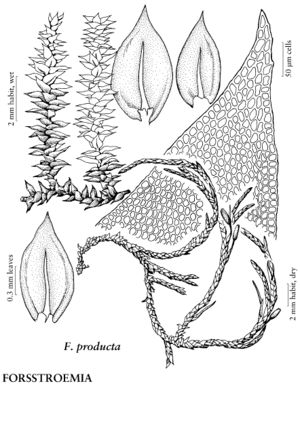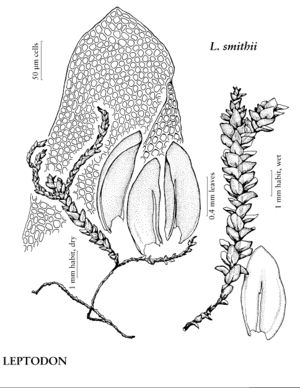Plants small to large, light green to yellow-green. Stems creeping, irregularly pinnate, branches arcuate to erect, short to elongate, simple to many-branched, incurved or rigid when dry, in clusters of 1–5 on either side of vegetative growth interval; paraphyllia present or absent; pseudoparaphyllia subfoliose to filamentous, entire; axillary hairs 6–8 per axil, proximal cells 1 or 2, short, walls light brown, distal cells 2–4, elongate, hyaline. Leaves spirally inserted, loosely appressed to imbricate when dry, erect-spreading to squarrose when moist, rapidly spreading when moistened, usually ovate-lanceolate; margins entire or serrate distally; apex obtuse, acute, or acuminate; costa single, ending before apex, or double, short; alar cells quadrate to transversely elongate; laminal cell walls thick; medial cells isodiametric to linear, smooth. Specialized asexual reproduction absent. Sexual condition autoicous or dioicous; perigonia lateral, gemmiform; perichaetia lateral, larger, inner leaves following fertilization, paraphyses elongating. Seta single. Capsule immersed to exserted, symmetric; stomata absent, or basal, sunken; annulus absent; operculum conic-rostrate; peristome usually double, pale; exostome teeth 16; endostome rudimentary or absent to well developed, cilia absent. Calyptra cucullate, hairy or naked. Spores spheric, minutely papillose.
Distribution
Nearly worldwide, primarily temperate regions.
Discussion
Genera 5 or 6, species 20–30 (3 genera, 4 species in the flora).
Leptodontaceae are defined by the combination of epiphytic habit, branching pattern of clusters of branches alternate with unbranched intervals bearing inflorescences, double sporophytic phenological cycle in which two cohorts of sporophytes mature simultaneously with embryos overwintering, subfoliose pseudoparaphyllia, cucullate calyptrae, sheathing postfertilization perichaetial leaves, central strands lacking in shoots, shortened setae, no annuli, and an exostome that flexes open when moist and flexes inward when dry (hydrocastique), thus serving to disperse spores during wet periods. Leptodontaceae as treated here comprise Alsia, Forsstroemia, and Leptodon. Recently described or relocated genera in the family include Caduciella Enroth, Cryptoleptodon Renauld & Cardot, and Taiwanobryum Noguchi (J. Enroth 1992). Molecular evidence indicates that this small family may not be monophyletic, and is better viewed within the larger context of the family Neckeraceae (S. Maeda et al. 2000; M. S. Ignatov et al. 2006).
Selected References
None.
Lower Taxa
Illustrations
| Family ⠉ | Taxon | Illustrator ⠉ | |
|---|---|---|---|
 | Leptodontaceae | Alsia californica | Patricia M. Eckel |
 | Leptodontaceae | Forsstroemia producta | Patricia M. Eckel |
 | Leptodontaceae | Leptodon smithii | Patricia M. Eckel |
Key
| 1 | Paraphyllia absent. | Forsstroemia |
| 1 | Paraphyllia present | > 2 |
| 2 | Secondary stems densely 2-pinnate to flagelliform or irregularly pinnate; [calyptrae hairy; endostome rudimentary]; Colorad o. | Leptodon |
| 2 | Secondary stems pinnate and frondiform distally; calyptrae naked; endostome well developed; Pacific Northwest. | Alsia |